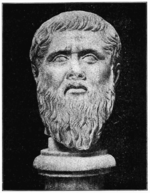User:Niloiva/sandbox/Jungian Archetypes Intro/Sandbox
Introduction[edit]

Carl Jung rejected the tabula rasa theory of human psychological development, which suggests that people are born as a blank slate and their experiences shape their thoughts, behaviors, and feelings. Instead, he believed that there are universal experiences inherent to the human experience, such as belonging, love, death, and fear.[1] These experiences, which he called the collective unconscious, are expressed in what he called archetypes.[1] Jung believed that evolutionary pressures influence these archetypes and manifest in the behaviors and experiences of individuals.[2] To explain this idea, he first introduced the concept of primordial images, which he later referred to as archetypes.
According to Jungian psychology, archetypes are innate potentials expressed in human behavior and experiences. They are hidden forms activated when they enter consciousness and are shaped by individual and cultural experiences.[3] The concept of archetypes is a key aspect of Jung's theory of the collective unconscious, which suggests that universal experiences are inherent to the human experience. They are the "universal organizing themes or patterns that appear regardless of space, time, or person."[4] The existence of archetypes can be inferred from various cultural phenomena, such as stories, art, myths, religions, and dreams.[5]
Jung's concept of archetypes was influenced by the theories of Immanuel Kant, Plato, and Arthur Schopenhauer.[6] Jungian archetypes differ from Plato's concept of Ideas in that they are dynamic and constantly seeking expression in an individual's personality and behavior. He believed these archetypes are activated and given form in the encounter with empirical experiences.[6]
For Jung, "the archetype is the introspectively recognizable form of a priori psychic orderedness".[7] "These images must be thought of as lacking in solid content, hence as unconscious. They only acquire solidity, influence, and eventual consciousness in the encounter with empirical facts."[8]
According to Jungian psychology, archetypes form a common foundation for the experiences of all humans. Each individual builds their own experiences on top of this foundation, influenced by their unique culture, personality, and life events. While relatively few innate and amorphous archetypes exist, they can give rise to many images, symbols, and behaviors. While the resulting images and forms are consciously recognized, the underlying archetypes are unconscious and cannot be directly perceived.[9][10]
Jung believed that the form of the archetype was similar to the axial system of a crystal, which determines the structure of the crystal without having a physical existence of its own. The archetype is empty and purely formal, and how it is expressed depends on the circumstances in which it is activated. The representations of the archetype are not inherited, only the forms, and they correspond to the instincts. The existence of the instincts and the archetypes cannot be proven unless they manifest themselves concretely.[11]
- ^ a b Weiner, Michael O.; Gallo-Silver, Les Paul (2018). The Complete Father: Essential Concepts and Archetypes. Jefferson, NC: McFarland. p. 5. ISBN 978-1-4766-6830-7.
- ^ Stevens, Anthony (1999). On Jung: Updated Edition (2nd ed.). Princeton, N.J.: Princeton University Press. p. 215. ISBN 069101048X. OCLC 41400920.
- ^ Stevens, Anthony in "The archetypes" (Chapter 3.) Ed. Papadopoulos, Renos. The Handbook of Jungian Psychology (2006)
- ^ O'Brien, John A. (2017-04-03). "The Healing of Nations". Psychological Perspectives. 60 (2): 207–214. doi:10.1080/00332925.2017.1314701. ISSN 0033-2925.
- ^ Stevens, Anthony (2015). Living Archetypes: The selected works of Anthony Stevens. Oxon: Routledge. p. 141. ISBN 978-1-317-59562-5.
- ^ a b Andrew Samuels, Jung and the Post-Jungians ISBN 0415059046, Routledge (1986)
- ^ C. G. Jung, Synchronicity (London 1985) p. 140
- ^ Jung 1928:Par. 300
- ^ Munro, Donald; Schumaker, John F.; Carr, Stuart C. (2014). Motivation and Culture. Oxon: Routledge. p. 2027. ISBN 9780415915090.
- ^ Packer, Sharon (2010). Superheroes and Superegos: Analyzing the Minds Behind the Masks: Analyzing the Minds Behind the Masks. Santa Barbara, CA: ABC-CLIO. p. 82. ISBN 978-0-313-35536-3.
- ^ (CW 9, pt 1, para. 155)
